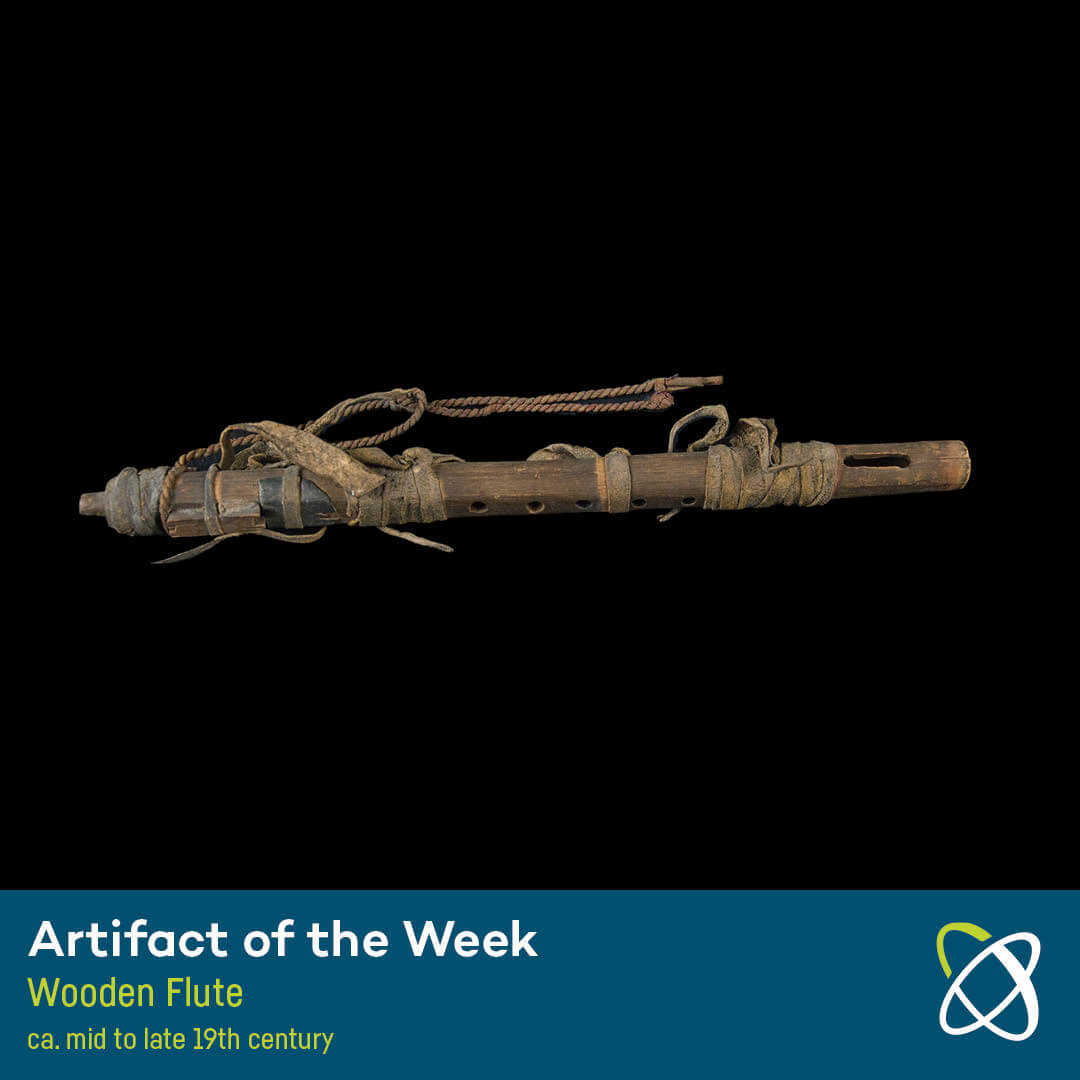Flute – ca. mid to late 19th century
Check out this beautiful example of a Native American flute! It is a wooden split flute, hollowed out and held together by hide wrappings. Made by Native Americans from the Central Plains, likely the Arapaho or Blackfoot, the flute is straightforward in its design, but don’t let that fool you. The simplicity of its construction produces a rich and distinctive sound which sets it apart from other instruments.

Traditional Native American flutes have a very distinctive sound because of the way in which they are constructed. These are the only flutes in the world with two air chambers; a wall inside the instrument divides the top chamber and the bottom chamber where the whistle and finger holes are located. The air moves slower through the top air chamber, so it acts as a secondary resonator, giving the instrument its unique sound. Two different types of Native American flutes exist, the plains flute and the woodlands flute, and although there is a slight difference in how they are constructed, both have two air chambers.
At first, the flute was very personal with its own particular character. It was played unaccompanied in courtship, meditation, healing, and spiritual rituals. It was the most important Native American instrument after the drum. Today the flute is still commonly heard played alone, but it is no longer unusual to hear it played with other instruments or accompanying vocals.
Various stories exist about how Native American peoples discovered the flute. Many of these stories share a common element – the woodpecker. One day, the woodpecker drilled holes in hollow branches of a tree. The wind blew through the holes just right, creating pleasing sounds. So Native Americans attempted to recreate this sound with the wooden flute. While this could indeed be true, the prevailing theory is that the ancient Pueblo peoples created the flute based on ancient Mesoamerican designs.
See more Artifacts of the Week
Artifact of the Month Video Series
Connect with curiosity!










